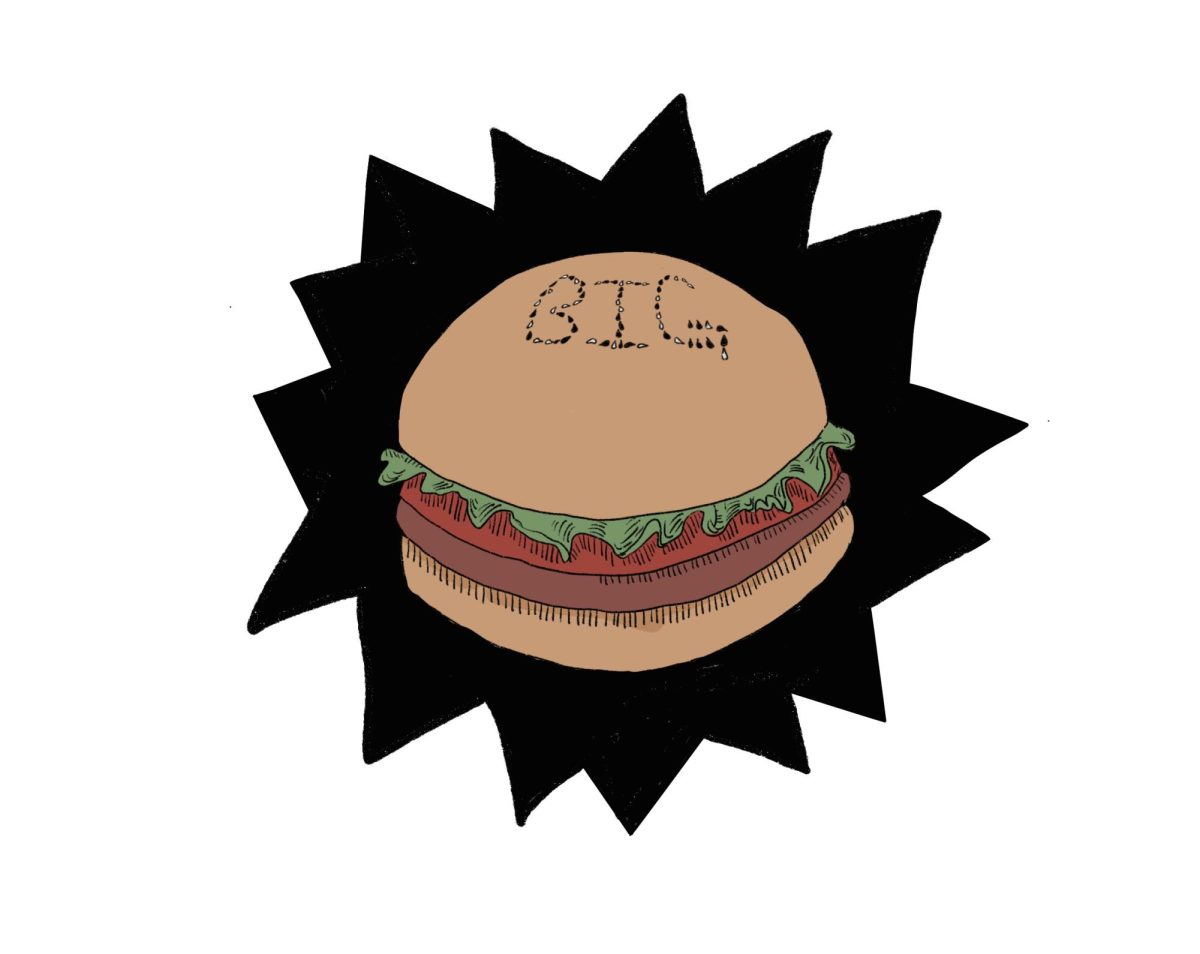By Chloe ’21 and Bella ’21
Thrifting’s rise in popularity
Thrift-shopping, or “thrifting,” has recently become popular even among wealthy consumers and high school students. The rise of thrifting among Gen Z can be attributed to multiple things, including a desire to follow the trends that they see on their Instagram or TikTok pages.
Thrift shops offer a wide variety of clothes from vintage to athleisure. The opportunity that thrifting provides to express one’s creative side whether it be gaining inspiration from earlier eras and matching them to current trends or simply finding clothes that appeal to one’s aesthetic has led to the rise of thrifting.
“I have recently been searching for clothing that represents the 2000s era and I have been able to find some great pieces at Goodwill,” Kate ‘21 said.
In a survey sent to the Marlborough community, 45% of students said that they regularly shop at thrift stores and 28% said they do so occasionally.
Additionally, when asked why they choose to thrift, 73% of students responded that they liked the clothing at thrift stores, suggesting that people are looking for items beyond what current fast fashion offers them.
Furthermore, many high school students see thrift stores as a cheaper alternative to traditional retail stores; 67% of students say they thrift because the clothing is cheaper.
One student from the survey said that she found a lot of her wardrobe in thrift stores.
“All of my favorite outfits and clothing pieces were thrifted from either Goodwill or Depop and I love them so much! I also thrift rings, necklaces, glasses, belts, shoes and more.”
Clothing resale platforms
Reselling has become popular among teens which has led to the rise of Depop, an app that allows people to sell their clothes by building their own online stores where buyers can shop for clothing through the app. According to TechCrunch, currently, Depop has 13 million users. As Gen Z is able to use social media to circulate new ideas and trends about fashion, Depop becomes another platform in which to do this. Many students like buying secondhand clothing also because of the quality of clothes that can be found at both thrift stores and Depop.
TechCrunch states that 80% of Depop shoppers are aged 13 to 24. This reflects the way that Gen Z has become more interested in issues such as fast fashion and environmental sustainability. In the survey sent out to Marlborough students, 68% of students expressed environmental motivations behind their thrifting.
“I think it’s better for the environment and there’s some really cute and cheap clothes there!” one student said in response to a UV survey.
14% of Marlborough students buy clothes from Depop while 34% said they thrift from both Goodwill and Depop. Many sellers like the ability to create their own platforms and interact with other people who are similarly interested in fashion while also making money. “I like the ability to be able to put all my clothes and style into one app and make profit from this really interesting method of creativity,” Depop seller Kaelyn ‘21 said.
Furthermore, sellers can also become buyers and invest in cheap and environmentally conscious pieces for their own wardrobe by interacting with sellers. Marlborough students have begun to build their Depop platforms and enjoy frequently looking for new pieces on the app.
“I also like the fact that I can just search for any piece of clothing that I want to add to my wardrobe and find it on Depop for cheaper. It’s really a great app for people who like fashion and want to make money.” Kaelyn ‘21 said.
Environmental benefits
The rise of fast fashion may be driving some to turn to thrifting in search of environmental-friendly alternatives. Fast fashion is the creation of clothes that are mass-produced and made cheaply, with little money paid to the workers making the garments. According to Business Insider, the amount of clothes produced in 2020 is double the amount of clothing produced in 2000, but consumers are only keeping the clothing for half as long. Furthermore, 85% of textiles go into landfills each year, making the amount of clothes dumped into landfills or burned each second the volume of one garbage truck. The fashion industry is responsible for 10% of the world’s carbon emissions, and washing clothing releases 500,000 tons of microplastics into the ocean every year.
All-School Environmental Representative Amber ’21 believes fast fashion is contributing to the many environmental problems our country is currently facing.
“Cotton takes so much water, and all of fast fashion clothing is manufactured for limited use,” Amber said. “Especially now in fashion, people are wearing things once and never wearing them again. You would be hard-pressed to find a fast fashion company that has adequate pay for their workers, and adequate results, in terms of the quality of clothing.”
One of the major benefits of thrifting is that it combats fast fashion and the overproduction of clothing. Waste and Resources Action Program, a sustainability group in England, found that “extending the average life of clothes by just three months of active use per item would lead to a 5 to 10 percent reduction in each [item’s] carbon, water and waste footprints.”
Additionally, shopping at thrift stores helps support community development. Thrift stores, like Goodwill, hire locally and many hire disabled workers. The profit thrift stores make goes into the pockets of community members, instead of the owners of large fast fashion businesses, like Forever21.
A survey was sent out to Marlborough students to gauge the community’s opinions on thrifting. Out of the students who responded to the survey, 68% of students said they choose to thrift because they believe it is better for the community. One respondent finds thrifting more enjoyable due to its positive environmental impacts.
“Thrifting is also super fun and less stressful than shopping for unused clothes because it’s cheaper and better for the environment,” she said.
Backlash and gentrification
While thrifting is on the rise, not everyone is on board with its newfound popularity. Stores like Goodwill, which are utilized for thrifting, were made with the aim to have cheap clothing available for lower income families and provide employment opportunities. However, many more affluent thrifters are frequenting Goodwill to find cheap deals for their clothing. Of students who responded to the survey, 35% said they shop at Goodwill, while 3% said they also thrift at the Salvation Army, a charitable thrift shop. Ten percent of students said they don’t participate in thrifting because they view it as gentrification. When asked about their thoughts on thrifting and gentrification, Marlborough students had conflicting opinions.
“I try to avoid thrifting too much because it can drive up prices and affect people who really need it,” commented an eighth grader.
Another student believes that thrifting without gentrification is possible, but thrifters must be careful of what items they are buying.
“I think that when thrifting you should be very conscious about not taking items that would be extremely necessary, such as boots or coats,” she wrote. “I am thrifting mainly because it is good for the environment and really fun, but it is super important to remember that for many people that is their only option for buying clothes.”
However, other Marlborough students believe the gentrification of thrift stores is only myth, and one can thrift without having to worry about taking clothes from others.
“I’ve read that the supply of used clothes in thrift stores is much much greater than the demand among poorer communities, so participation from wealthier people in thrifting doesn’t actually really drive up the prices or prevent people who need that source of cheap clothing from buying what they need,” commented a junior.
Many students seem to settle on a compromise, recognizing that gentrification could occur, but can be avoided with careful consideration of items that are thrifted. One senior believes that if one is attentive to shopping location and items of clothing, thrifting can be done respectfully.
“I used to avoid thrifting because of the gentrification argument, but recently learned that if one makes sure to stay out of lower-income neighborhoods, other shops have a very heavy and consistent stream of donated clothes, so shopping there doesn’t make too much of a difference,” said the senior. “I still think the best thing is to shop consciously by not buying items you don’t love, and to avoid items like heavy winter coats/shoes/baby clothes that others need more.”







